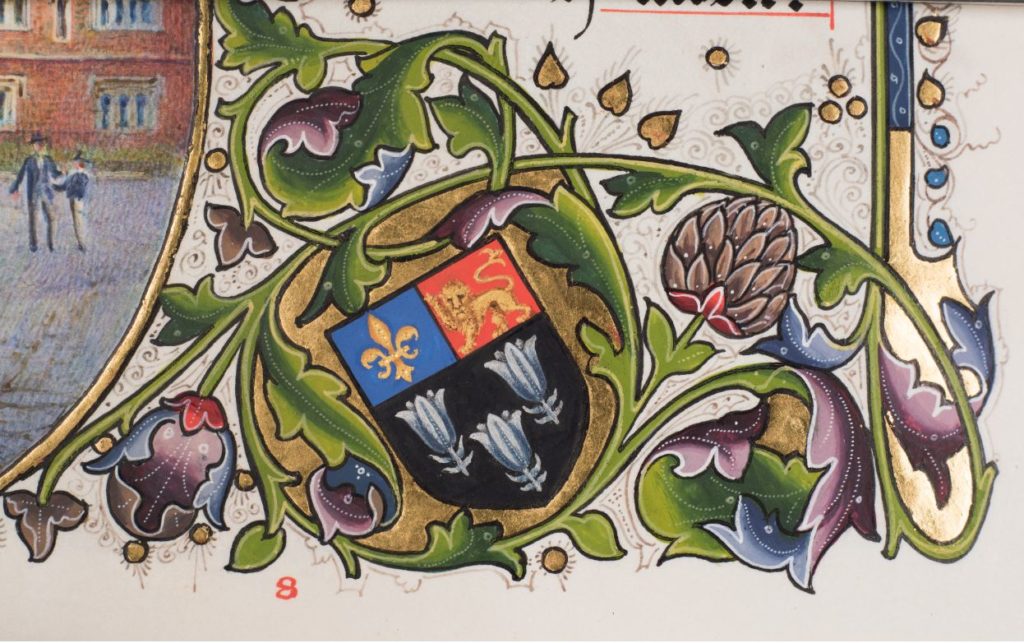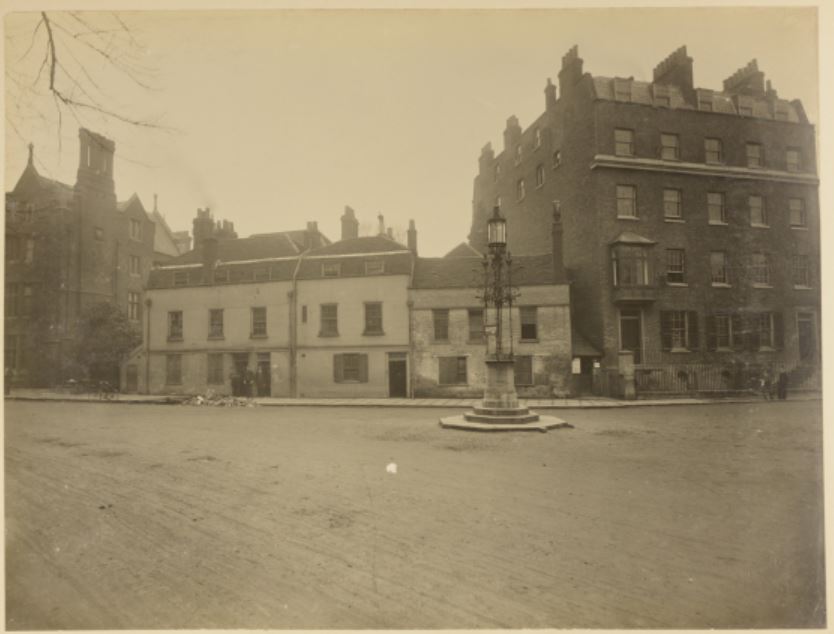Collections Home What’s On Events The Burning Bush
The Burning Bush
The Burning Bush
Collections Home What’s On Events The Burning Bush
The Burning Bush
Cross the road carefully at the crossing and position yourself next to the wrought iron lamp, known as the Burning Bush.

The Burning Bush was designed by Henry Woodyer in 1864, in a florid Gothic style. The design of the lamp plays on the Eton coat of arms, granted on 1 January 1449. The crest includes both a golden lion on a red background and a golden fleur de lys on a blue background, reflecting Henry VI’s position as King of France as well as England — the first monarch to be officially crowned king of both countries. The three lilies rendered in iron on the main body of the lamp are the symbol of the Virgin Mary, the patron saint of the College.

The grant of arms, signed by Henry VI in 1449, gives further reasons as to why lilies were significant:
On a field sable three lily-flowers argent, intending that Our newly-founded College, lasting for ages to come, whose perpetuity We wish to be signified by the stability of the sable colour, shall bring forth the brightest flowers redolent of every kind of knowledge, to which also that We may impart something of royal nobility, which may declare the work truly royal and illustrious, We have resolved that that portion of the arms, which by royal right belong to Us in the kingdoms of France and England, be placed on the chief of the shield, per pale azure with a flower of the French, and gules with a leopard passant
In 1963, the Burning Bush was moved from its island in the middle of the road to its current pavement position at the front of School Hall. The daily meeting of schoolmasters, ‘Chambers’ historically took place here.


